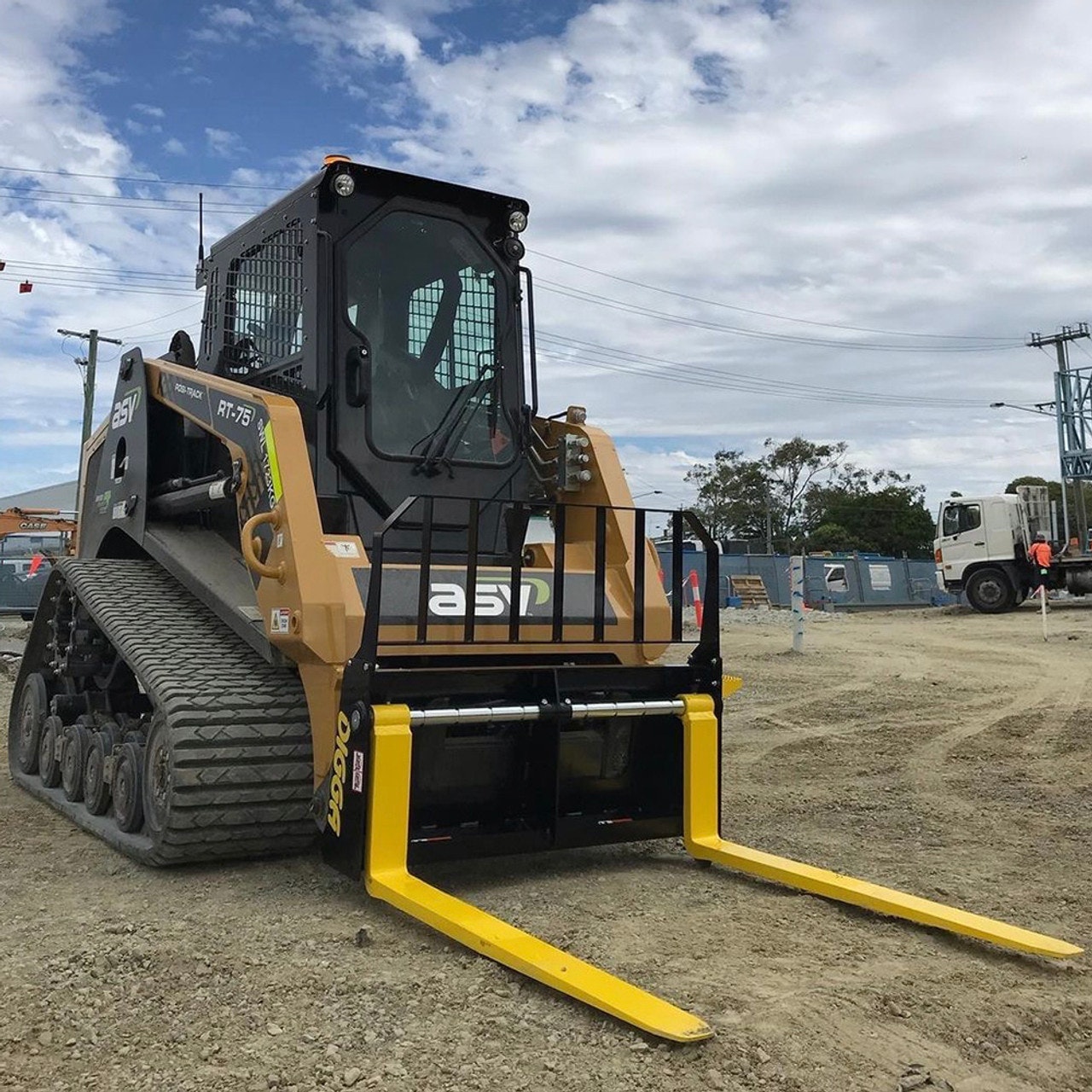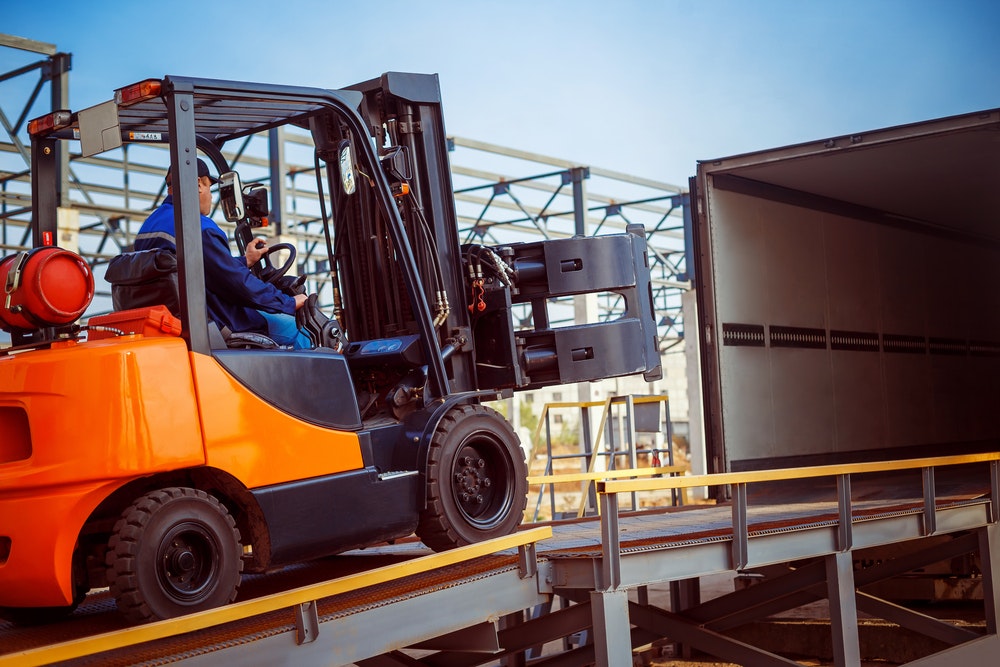Trying to figure out if your job site needs a skid steer or a forklift? Well here's a riddle for you: a skid steer can be a small forklift, but a forklift can't be a skid steer. Has your head exploded yet? If not, read on.
Skid steer loaders are versatile pieces of equipment that can be used for a wide range of applications on construction sites, in mining and in the agricultural industry. Forklifts, on the other hand, are typically used in warehouses and industrial environments - or else in the depots of construction supply companies, but rarely on actual construction sites.
We'll explore the details of both here so that you can get the full picture on which machine will suit your project best.
Need a forklift or skid steer?
Firstly: what is materials handling?
This is a super confusing quirk of Australian construction and industrial lingo, we know. 'Materials handling' means two things in Australia, both of which are relevant to this article.
'Materials handling' in the trucking space means the movement of dirt, soil, aggregates and quarry products (all by the tonne) as part of a construction process. In other words, the 'handling' of loose materials. So some heavy haulage companies may say they do 'materials handling', when others would call it heavy haulage, materials transport, bulk transport or quarry services. This means that whilst skid steers might be involved in lifting the dirt or filling the tippers and trucks, they aren't really involved in the materials handling industry in the sense intended above.
'Materials handling' also means the handling of all materials in the warehousing sense. So, often people who work in the forklift industry (or people who sell or hire forklifts) say they work in the materials handling industry. And indeed they do - forklifts handle materials in terms of pallets, shipped items and other inputs to the construction process. But they do not handle loose materials, however, since they can't carry or lift dirt etc.
So moving any materials is 'materials handling' but it very much depends on the industry and application when used as a service reference.
Can you use a Skid Steer as a Forklift?

Behold: A Skid Steer with Palette Forks attachment.
A skid steer loader is a versatile piece of construction equipment that can be used for a variety of tasks, including: loading and unloading trucks, moving materials around the job site, digging trenches for footings, clearing brush, spoil removal, and more. They can also be used as a forklift.
Skid steers are equipped with powerful hydraulic systems that make them suitable for lifting heavy materials with ease, and, as a result, they can accomplish some materials handling tasks quickly and efficiently.
Because of their diverse range of capabilities through the use of skid steer attachments (over 65 different attachments to be exact), skid steer loaders are a popular choice for construction and landscaping projects. Skid steers are also compact, have a low cost of ownership, and are easy to operate.
Skid steers can perform some of the tasks of a forklift if you use a pallet forks attachment. This attachment is affixed to the boom or clipped onto the skid steer bucket, converting the skid steer into a forklift of sorts. They don't have a super high lifting capacity - their maximum lifting capacity is about 3 tonnes on a large skid steer.
Despite their payload limitations, as compared to larger forklifts, affixing forks to a skid steer can mean you can lift a palette or load over uneven ground - something that a regular forklift with rubber tyres can't do. The palette attachment to the boom (shown above) can lift more than the palette attachment to the bucket, by the way. The bucket clip attachment is only for small loads.
Can you use a Forklift as a Skid Steer?
While a skid steer is generally more versatile and suitable for larger, outdoor applications, forklifts are the ideal choice for indoor or under-cover environments. A forklift is commonly used to move heavy pallets around warehouses or shipping centres, or is often used to unload trucks and lift items up to high shelves or onto loading docks.
Forklifts come in a range of sizes and power options (ie, petrol, diesel and electric), and can lift loads from 1.2 tonnes to 22 tonnes. A forklift will come with attachments that allow them to perform specialized tasks such as pushing cars or lifting people via a platform known as a personnel lift. Their durable pallet forks provide a combination of power and manoeuvrability. But they don't have any attachments converting them to an earthmover (like a skid steer).

A forklift doing forklift things.
Hiring a forklift makes it easy and safe to move large loads anywhere you need them to go. They are materials-handling powerhouses in industrial environments, not construction environments, and are able to do an incredible amount of hours with low energy output and limited wear and tear.
Forklifts aren't earthmovers. They cannot dig, displace, level, compact or lift dirt or aggregates. They also can't work off-road - their rubber tyres are made for paved, asphalt or concrete surfaces. They also can't operate on slopes. So where a skid steer can be converted to a basic forklift using attachments, a forklift can't be converted into an earthmoving machine.
What are the limitations of a skid steer?
Even though skid loaders are incredibly useful and versatile machines, they do have some limitations in terms of warehouse materials handling. A skid steer loader generally requires unpaved ground to operate, so they aren't the best choice for indoor applications, paved or concrete areas, or super tight spaces. Forklifts have an incredibly tight turning circle by comparison to skid steers, and can move a lot faster.
Skid steers also can lift much smaller payloads when fitted with palette forks. The maximum a palette fork attachment on a skid steer can lift is about 1.8 tonnes - whereas that is where the lifting capacity of a forklift start.
If you're in a posi-track skid steer, then you cannot operate them on concrete over a long period of time without sustaining damage and wear and tear to the tracks.
What are the limitations of a forklift?
Well, for starters, forklifts can't move earth. Forklifts have a very limited range of tasks they can undertake when you compare them to skid steers, which themselves are some of the most versatile machines in construction. Forklifts also can't operate off-road, since their rubber tyres mean they are only an option on concrete or asphalt surfaces. They also don't like operating on uneven or sloped ground - less you risk the machine tipping.
Forklifts are the most dangerous machines in the industrial space - but only because they are the most prolific (hundreds of thousands of them work in industrial applications all over Australia, therefore increasing the risk of injury overall). They are prone to accidents if not operated with proper safety measures in place and are now privy to more comprehensive licensing guidelines across Australia.
Skid steer loaders vs forklifts: which is better?
This one is easy: if you moving 'stuff' around you need a forklift. If you're moving dirt around, well then you probably need a skid steer. Skid steers are a great choice for outdoor projects or job sites with ample space, while forklifts are ideal for indoor applications or warehouses where large loads need to be lifted up high.
Related Articles:


